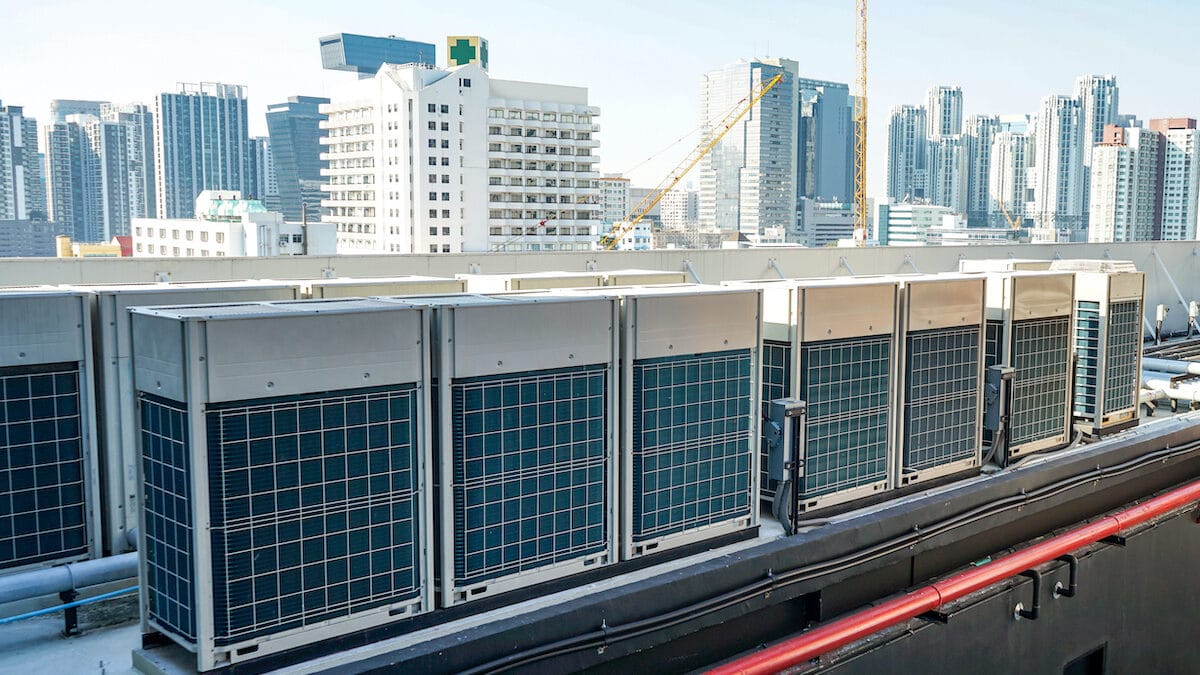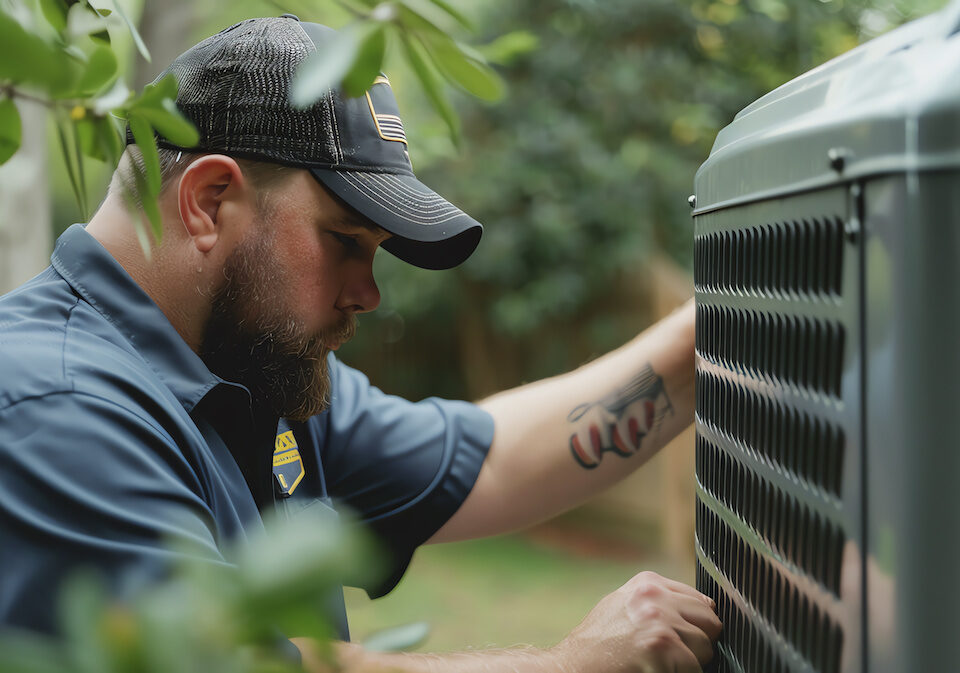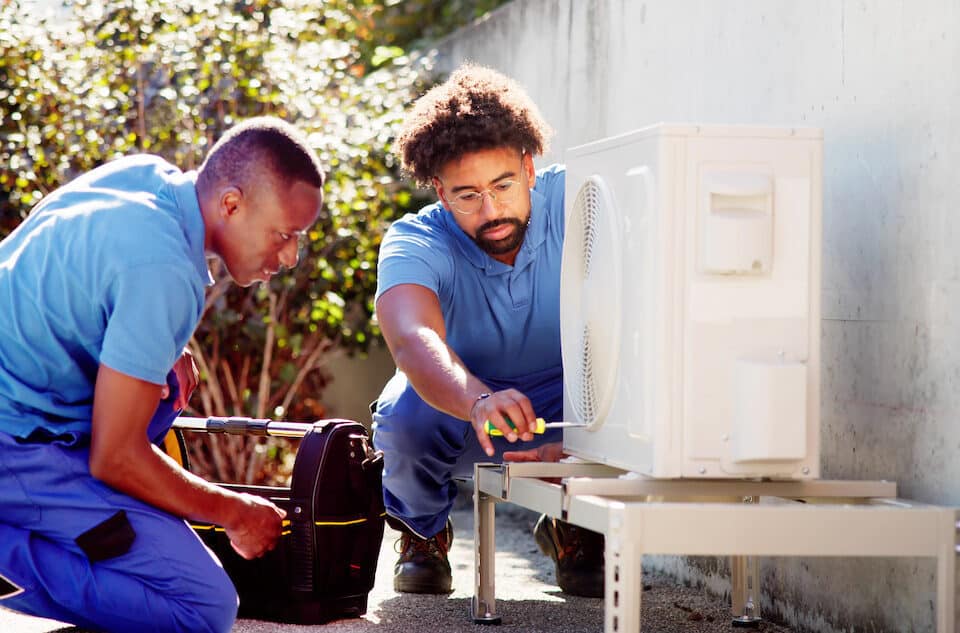How Big of An Air Conditioner Do I Need for My Commercial Building?

When you need to purchase a new commercial heating and air unit for your business, you’re probably most concerned with the acquisition and installation costs. Some business owners make the mistake of buying a system based mostly on price. While you certainly want to save money where you can, it’s very important to think long term.
This can be done, in large part, by knowing what size commercial HVAC you need. Air conditioners, as you might know, are measured in tons. Of course, this isn’t the weight measurement associated with very large objects; it isn’t 2,000 pounds. A ton in the world of HVAC is the measurable ability to heat or cool.
What this means is 1 BTU will heat or cool one pound of water by one degree Fahrenheit. If an HVAC system is undersized, there will be more hours per year when the plant is running fully loaded, and the system will not be able to hold indoor design conditions even on a design day, let alone any hotter days; that is, temperatures in these air-conditioned spaces will rise.
Construction Innovation
The average household HVAC unit ranges from 1 to 5 tons, however, units over 5 tons are generally considered commercial. So, a 6 ton commercial HVAC system will output 72,000 BTU’s in an hour.
Why all of this is so important is it gives you a general idea of just how big a commercial heating and cooling unit you need to keep your business comfortable.
This means it will continue to run, wasting energy, and, increasing your utility costs. Should a system be over-sized, it will use more power to run but never achieve its maximum efficiency. This is why it is imperative to select the right-sized unit.
Calculating Your HVAC System Size
To know approximately what size commercial HVAC system you need for your business, you can use this simple method: the square footage, multiplied by 25, divided by 12,000) minus 0.5) equals the required tons for your commercial space.
Because commercial HVAC units are more energy-efficient than years ago, the size of the unit(s) needed could be different. To know for sure what size commercial heating and air system you need for your business, contact an experienced, licensed technician. You should also inquire about the ductwork and other components to get the most efficient configuration.
If you’re looking at AC replacement (whether your AC broke down or simply to upgrade), it’s important to take the time to find out what your needs are before buying a new one.
Whether you own a home or a business, you can easily figure out your air conditioning needs once know some HVAC rules of thumb. We help Georgia residents with their cooling needs. Contact us now to find out how we can help you.
Why This Calculation Is Important
HVAC units are designed to run uninterrupted for long periods, during which time they can remove excess humidity while cooling your building. If the HVAC unit is too large, it will constantly stop and start, leading to a decreased lifespan for your HVAC unit along with humidity problems inside your building.
There are a few common formulae and rules of thumb you can apply to different buildings to determine how much air conditioning you’ll need. While your estimate won’t be as authoritative as a contractor’s, it can help you budget and can serve as a source of comparison for any estimates you do receive. A commercial building will have radically different HVAC needs than a residential one.
There is much variation among commercial buildings as well as some require far more cooling needs than others. However, in many cases, one ton of air conditioning will remove about 12,000 BTUs from 500 square feet in an hour. You can use this to determine the cooling load of your building and the minimum size of your HVAC unit. To determine your building’s cooling load, simply add up all of the sources of heat, then multiply that by the number of 500 square-foot areas you need to be cooled.
Some Additional Considerations
Every window facing sunlight will also add 1,000 BTUs to your estimates. Every additional kitchen in your building will add another 1,200 BTUs to your calculations. In order to calculate how much air conditioning you will need, divide the square footage of your building by 500. Then, multiply this number by 12,000 BTUs, and then add to that number the additional heat generated by windows, workers, or areas such as kitchens.
Some companies now divide the square footage by 1,000, which can give you a range of values for your HVAC needs.: What Makes One AC Unit Better Than Another? Given the higher cooling needs of commercial buildings, commercial HVAC will have different costs than residential. You can expect to pay anywhere between 1.6 to 2 times more to cool a busy commercial space compared to a similarly sized residential area.
Here at Trust Heating and Air, we want to make all this easier on you. Contact us now to let us help you figure all of this out and get you a free estimate today.



